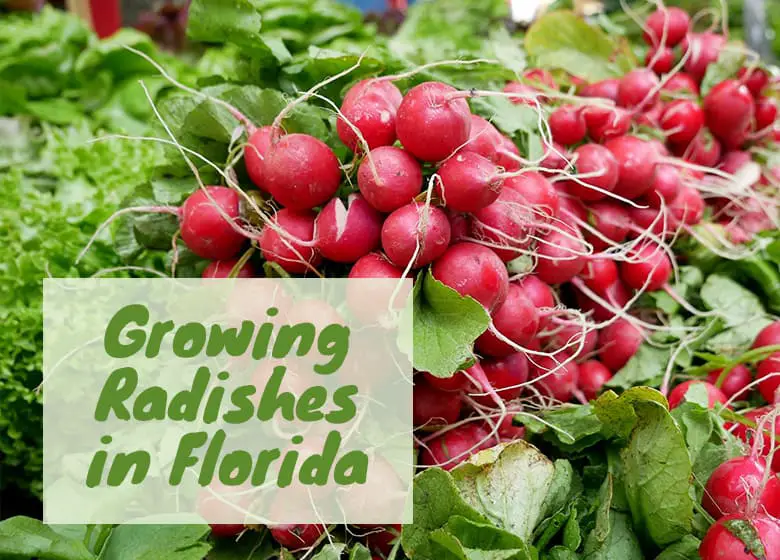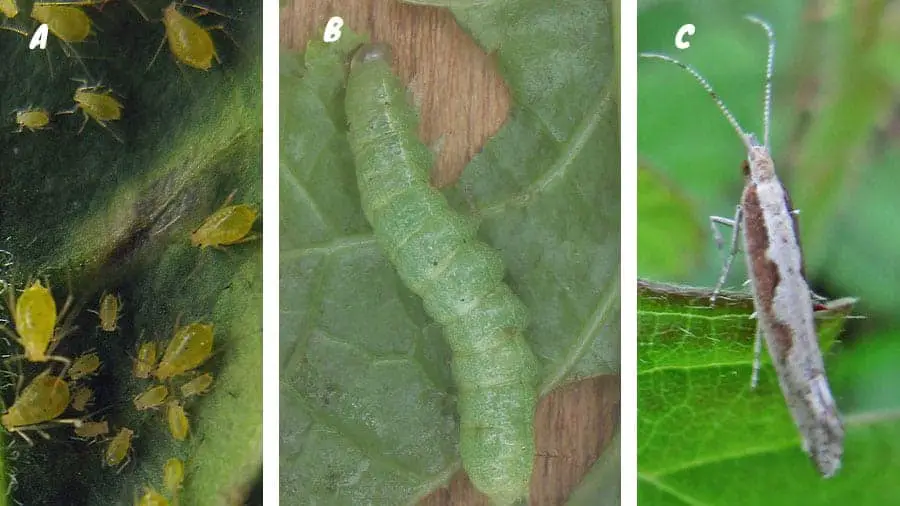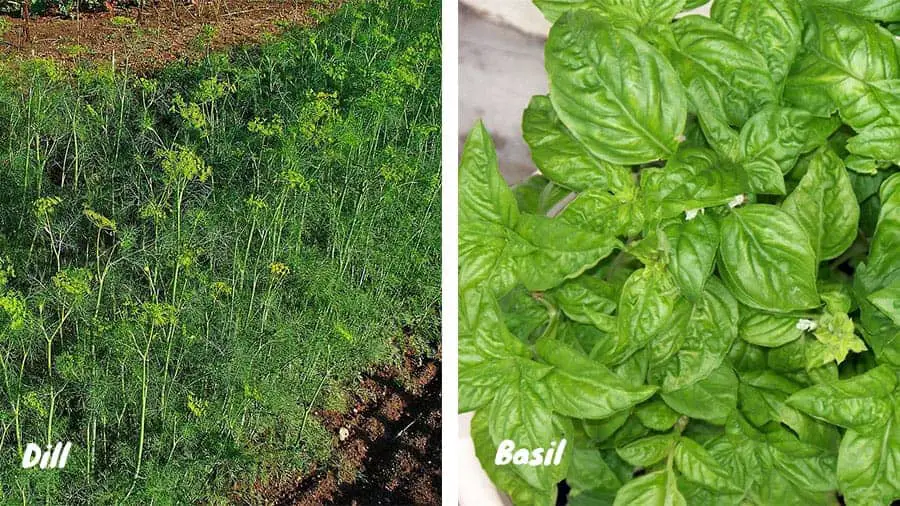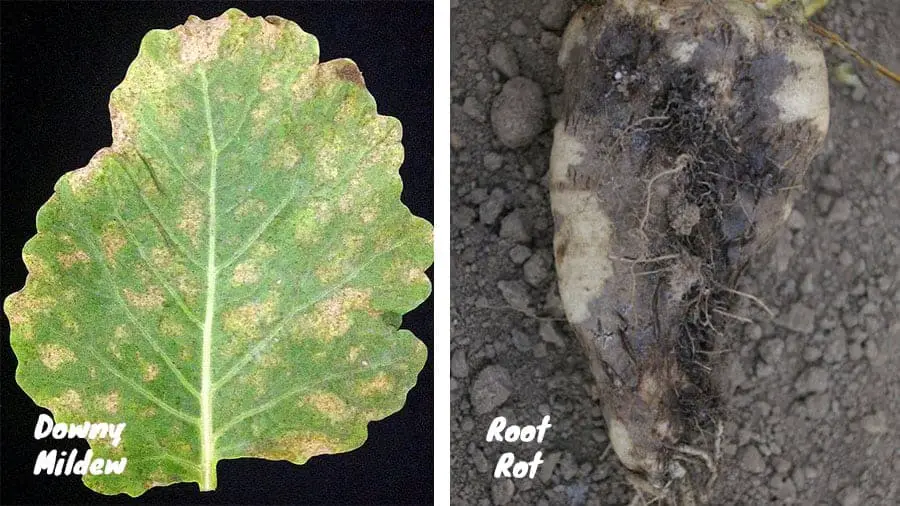
Is it possible to grow radishes in Florida?
Yes, you can grow Radishes in Florida. They prefer the cooler months of September through March. Florida Friendly Varieties are Cherry Belle, White Icicle, Sparkler, Champion, and Daikon.
Continue reading to get planting instructions, More on each variety and things to look out for when growing radishes in Florida.
Florida friendly radish varieties
There are all sorts of different radishes available. There’s your classic radish, red and round.
but there are also some that are short, stocky and purple, and others that look like a fat white carrot.
Cherry Belle
Mature quickly, they are ready for harvest about a month after planting. Cherry Belle radishes are small, red and round. They are about an inch in diameter and the leafy green parts only get about 3 inches tall when they are ready for harvest.
White Icicle
Looks more like a white carrot than a radish. These guys mature quickly as well, ready for harvest in about 30 days. At maturity they are roughly 6 inches long and an inch thick. This is an heirloom variety that dates back to the mid 1800s.
Sparkler
A mild peppery radish , the sparkler is a two tone variety. It grows red on the top with a white bottom. They are shaped a little funny, they have a round head that can be up to 1 ½ inches in diameter with a long white tail. Also quick to mature at 25-30 days.
Champion
Similar to the cherry belle, It’s red, round and fast to mature. Champion radishes grow slightly larger before harvesting. They taste best when the roots are about 1 ½ -2” in diameter, this is usually between 20-30 days.
Daikon(minowase)
Daikon, an easter asian type radish, looks similar to a white icicle radishes but they can grow quite a bit larger. The best time to harvest Daikon radishes is when the root is anywhere between 2-4” in diameter and 6-20” inches long. Their leaf spread is larger as well,reaching up to 2’ in diameter.
How to plant radishes
Since radishes all mature so quickly,(usually in about a month, if it’s a Daikon then expect longer) it’s a good idea to stagger some of your planting. Plant some seeds, wait a week or two and then plant some more. Doing this staggers your harvest, this way you don’t have 100 radishes all ready for eating at the same time.
Radishes normally need about 2-3” all the way around to grow properly. If you have too many in one spot, it gets all cramped and then they got no room to spread their roots.
You can either mark holes every 2-3” where you plan to plant and drop a few seeds in.
Or
you can just evenly broadcast your seeds in the area you plan to grow.
I think it’s a little painful every time you have to kill a healthy seedling but you have to make sure that you thin your seedlings. This gives your surviving radishes the best chance at a productive life.
It’s also a good practice to plant radishes and carrots at the same time.
Carrots always take kind of long to germinate and they are easy to lose. Since radishes germinate so quickly you can plant them along side of carrots and they will act as markers and protection to your young carrots. By the time the carrots are just starting to pop up and really need a little bit of space, your radishes will be ready for harvest. This gives you more bang for your buck in terms of harvest and space usage.
Where to plant
Radishes like the sun. Give them at the very least 6 hours of direct sun light, 8 or more is best.
You can plant radishes in containers or raised beds. Most varieties don’t grow very large and are a great plant to grow if you are working with limited space.
When to harvest radishes?
The longer you let them keep growing the more flavor you are giving up. The older a radish gets the more woody the plant becomes. This makes it have a tough texture and just generally not as good as a younger radish.
Usually, radishes are ready for harvest only about 30 days after planting, which is super fast.
But you can start pulling up your plants before that. Use the 30 day mark as a guideline, there is a window of about 10 days or so on either side.
Size is a good indicator of when to pull up your plants.
All the varieties listed(besides the daikon radish) are ready for harvest when they are about an 1 ½ ‘ in diameter and about 6” in height.
Daikon radishes grow larger than the other florida friendly varieties. Since they grow larger they take longer to mature. They can be harvest when they are 2-6” in diameter and some even up to 2’ long.
Watering
Radishes, like all living things, like to drink water regularly. If the soil and root are allowed to dry out, radishes can start to get really woody. This makes a more bitter and intense taste. Keep their soil moist but not too moist. A good soil will definitely help with this.
What kind of soil?
Radishes are pretty forgiving when it comes to soil. They don’t need ideal conditions to grow but it’s never a bad idea to improve your soil.
Since radishes are root growing vegetables they prefer a soil that is loose, kind of like how most of our Florida soil is.
Radishes do however love lots of organic material like compost.
My go to soil mix is usually something like this:
- ½ peat moss or coco coir(Peat moss is cheaper but it’s farming practice isn’t sustainable)
- ½ compost
- Worm castings for fertilizer
- Fungi additive to create an internet of nutrients, making them easily available to your plants.
This mix is loose enough to allow the roots to easily spread. It has plenty of organic material which radishes love and has good moisture retention.
Always be sure to mulch! This is pretty much required. Mulching is so important in water retention.
What kind of fertilizer for radishes?
Since radishes are root vegetables, this means that our fertilizer should be more phosphorous oriented, something like this, a 0-3-0 is probably enough for a radish.
The three values that you see on most fertilizer bags, the N-P-K values, represent the amount of Nitrogen, Phosphorus and potassium is in that fertilizer.
Each nutrient does something different for the plant.
Nitrogen helps the plant produce leafy green growth. Phosphorus prompts healthy root growth and potassium is good for overall health.
However, if you are planting into your Florida dirt, it’s good to get your soil tested by your local extension office.
Some of Florida’s soil is naturally high in phosphorus so no additional fertilizer may be necessary.
What pests attack radishes?
The two most common pests that attack radishes in Florida are Aphids and the diamondback moth.

Aphids are small and round with a yellowish greenish body. They are found on undersides of leaves and they suck the juices out of your plant. Diamondback moths lay eggs on the underside of your leaves and when they hatch their caterpillars eat your plant.
There are a few ways to control these guys.
chemically, you can get Neem oil and Spinosad. Neem will kill Aphids and Spinosad will take care of the caterpillars. Both of these are considered organic
Biologically, you will want to attract ladybugs and Trichogramma wasps. These are natural predators to aphids and diamondback moth caterpillars.

Try planting Dill and Basil near by, these plants have been known to attract both ladybugs and Trichogramma wasps.
What diseases affect radishes in Florida?
The two most common things you will see is root rot(Black root) and Downy mildew. Root rot is exactly as it sounds, the root of the radish gets small black spots on it and sometimes rots from the inside. Downy mildew starts as black and yellow spots on the tops of leaves and then grows into a white fuzzy looking mold.

If conditions are super moist and warm diseases can easily spread.
The best control for root rot is having well draining soil and to be planted during the proper time of year.
Downy mildew is controlled with a copper fungicide spray.
can you eat the tops of radishes?
There is no need to throw away your leafy green radish leaves. I hope you’re composting them before throwing them away, but either way, the whole plant is edible.
The leaves are earthy and peppery like the root.
You can use them as a salad, saute them with some oil and garlic or turn them into a pesto. There are lots of ways you can cook with radish tops.
The greens have a mix of antioxidants and vitamins such as vitamin C and B6.
Saving radish seeds
Radishes will grow very tall (3’+) if left alone and let go to flower. Radishes are not self pollinating so this means that you will have to have plenty of pollinators available if you want to have lots of seeds.
The radish plant makes bunches of small white flowers that form seed pods and begin to grow. The seed pods look a little bit like peas or green beans.
Once your seed pods have a decent size to them it’s a good idea to pull up your plant in order to dry it out.
I’ve seen some people hang their plant upside down on a clothesline or something similar in order to speed up the drying process. But as soon as your plant is crispy and brown you can start plucking the seed pods and breaking them open to harvest your seeds.
Growing radishes in Florida
- They mature fast, usually in about 30 days
- North and central Florida should plant between September and March. In south Florida plant between October and March.
- Florida friendly varieties are Cherry Belle, White Icicle, Sparkler, Champion, Daikon(Minowase
- They prefer loose, well drained soil with lots of organic material
- Their fertilizer should be phosphorus focused
- Common pests are aphids and diamondback moths, they can be handled chemically with neem oil and Spinosad. Or biologically by attracting ladybugs and wasps.
- Common diseases are root rot and downy mildew. Can be handled by ensuring your soil is well drained and a copper fungicide spray.
- The green leafy growth is a great source of vitamins and antioxidants.
